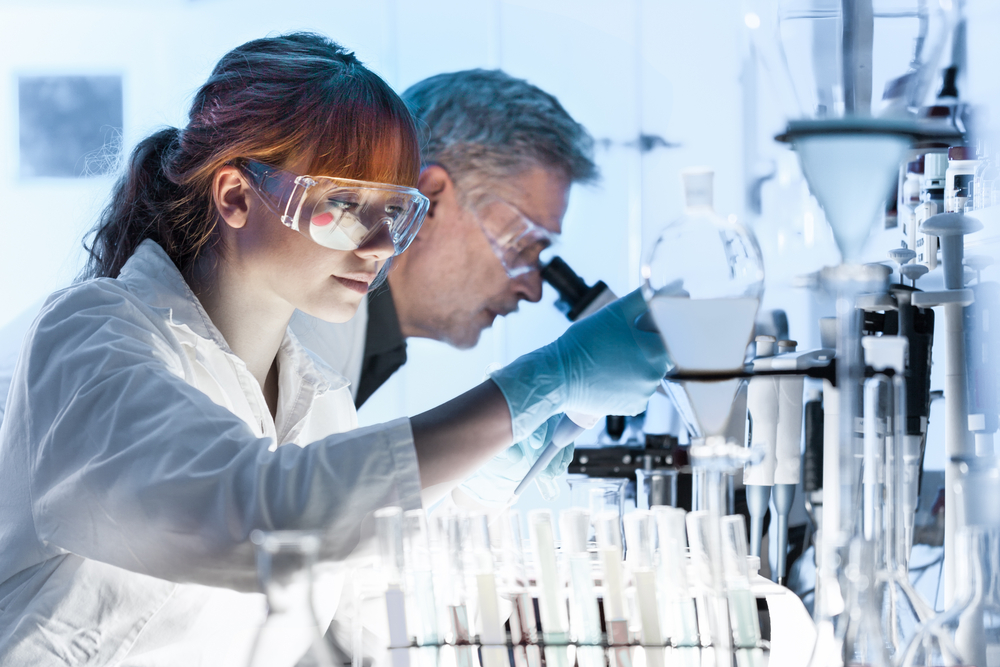Huntington’s May Manifest in Early Phases of Embryo Development, Study Finds
Written by |

Huntington’s disease may manifest itself for the first time during neurulation, a process in which the neural tube — the precursor of our nervous system (brain and spinal cord) — develops while an embryo is forming, scientists report.
These findings are in the study “Self-organizing neuruloids model developmental aspects of Huntington’s disease in the ectodermal compartment,” published in Nature Biotechnology.
Neurulation is a phenomenon that takes place in various animal species, including humans, during the early phases of embryogenesis (embryo formation).
It is during neurulation that the different cells forming the embryo’s ectoderm (the outer layer of the embryo) are assigned to a particular fate and start differentiating to give rise to specific tissues (like the nervous system, skin, nails, and hair). This is also the time-point at which the neural tube, a tube-like structure that is the precursor of the nervous system, first forms.
“Many human genetic diseases that target the ectodermal compartment (such as Down’s, DiGeorge’s and LEOPARD syndromes) are commonly accompanied by defects in multiple ectodermal lineages,” the researchers wrote.
“These conditions remain poorly understood, mostly because they have been studied in specific cell types rather than in their global tissue context in the presence of interactions between multiple ectodermal lineages,” they added.
Investigators at The Rockefeller University took advantage of micropattern technology — a technology that allows scientists to grow cells artificially in small patterns to create specific shapes or structures — to create large numbers of identical neuruloids.
These neuruloids are three-dimensional structures composed by a mass of human embryonic stem cells (hESCs) — stem cells obtained from an embryo that are able to grow into any type of cell — that the researchers used as a model of early human neurulation.
First the team proved that neuruloids could be used to accurately mimic human neurulation in vitro by inducing the formation of four different cell types — neural progenitors (precursors of nerve cells), cells of the neural crest (cells that give rise to muscle, cartilage, bones, and different types of nerve cells), sensory placodes (structures that give rise to the eyes, nose, and ears) and epidermis (the outer layer of the skin) — that normally form during neurulation.
To further validate their model, researchers also showed that the timing and the genes activated during cell differentiation in neuruloids fully recapitulated the processes normally seen during neurulation in the embryo.
Finally, to see if their neuruloids could be used to study specific diseases thought to arise during the development of the nervous system, they used hESCs containing excessive CAG repeats within the huntingtin (HTT) gene. This allowed them to investigate what would happen to an embryo carrying genetic defects associated with Huntington’s disease during neurulation.
Neuruloids composed of hESCs carrying genetic defects associated with Huntington’s failed to form normally, and had several abnormalities that affected their three-dimensional structure, they reported. Nevertheless, these abnormal neuruloids still retained their ability to give rise to all the different cell types investigators had previously seen.
“In this regard, our results suggest that human embryos carrying the [Huntington’s disease] genotype may show defects as early as the neurulation stages through a loss-of-function mechanism,” the researchers wrote.
According to the scientists, next steps in research will include using neuruloids to test the effects of several drugs that may prevent these structural abnormalities from taking place. They believe this new in vitro system has a real potential to be an alternative to animal models of disease for several developmental disorders.
“This technology really opens a door toward identifying the mechanisms that govern brain development, understanding how they go awry in disease, and testing drugs that set these mechanisms back on the right course,” Ali Brivanlou, the Robert and Harriet Heilbrunn Professor at the university, a specialist in genetics and stem cell biology, and the study’s corresponding author, said in a press release.





